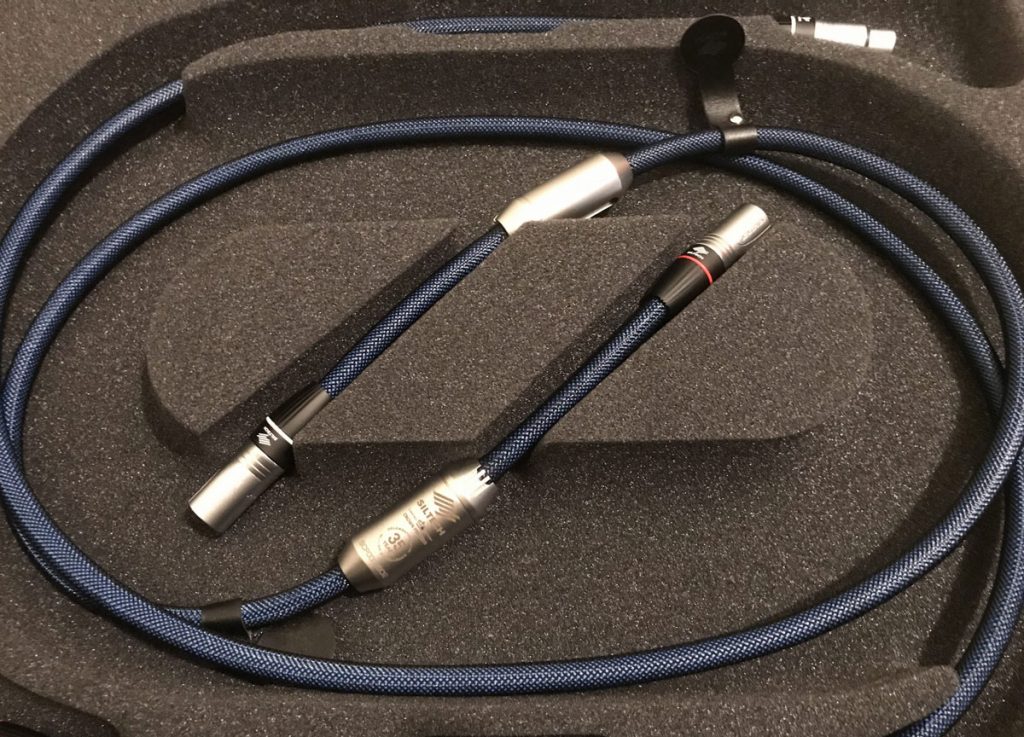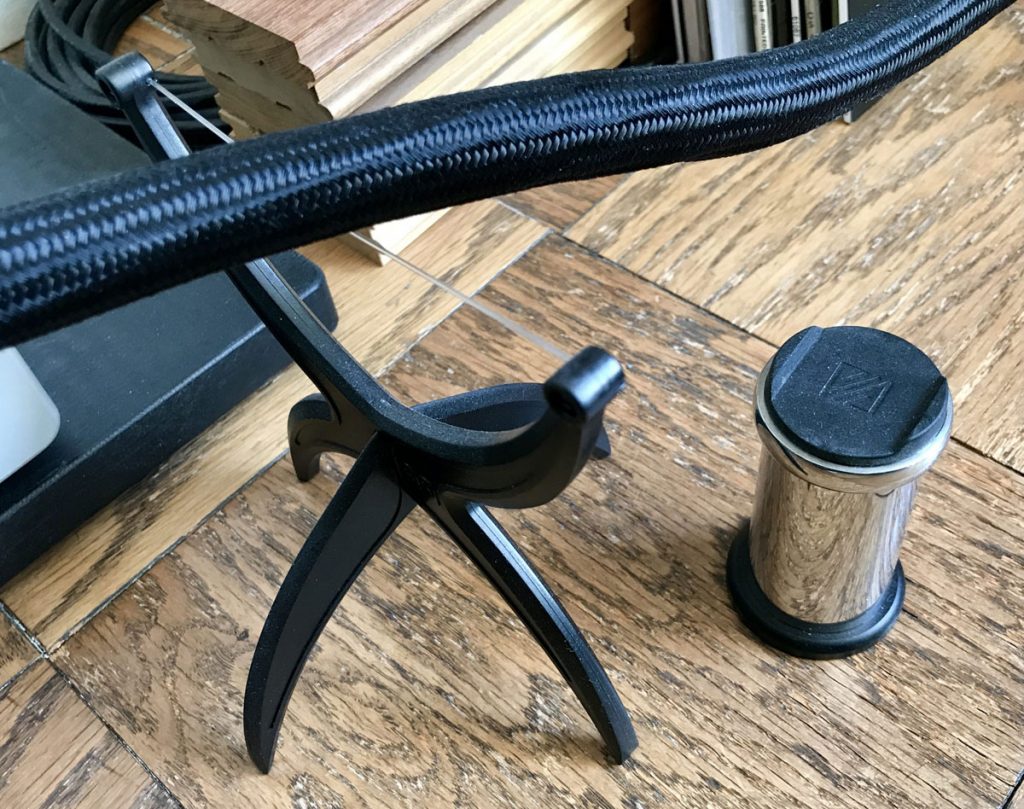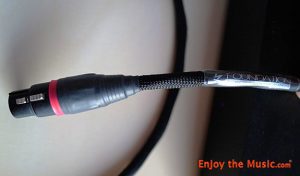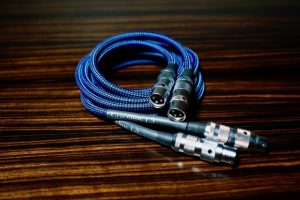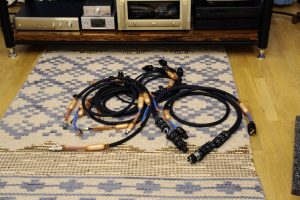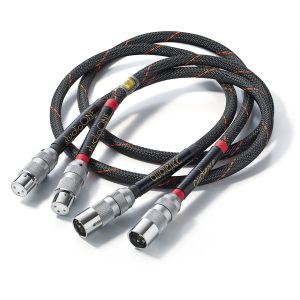If there was a robust market for high-end audio cables back in 1983, I wasn't aware of it, but that's when Siltech joined the fray. In 2018, they commemorated 35 years with a limited edition series. It's now 38 years! That's a long time in any business.
The 35 Year Anniversary series is comprised of the Crown Princess interconnect, Crown Prince speaker cable, and Crown Prince power cord. They were originally released in a limited edition book-shaped box that told the Siltech story. This "book" edition has long been completely sold out but, because the cables sold well, their lifespan was extended within the Royal Signature Series.
I received a couple of runs of the Crown Princess XLR interconnect. A casual perusal reveals the IC has the kind of seriously good build quality that Siltech is known for. The materials and evident care go a little beyond the competition—even the packaging makes a favorable impression. For a company that has been in the cable business for 38 years, Siltech has really nailed the customer first impression end of it.
They didn't skimp on the internals, either. The 35 Years Anniversary series shares many trickle-down material and design innovations, including the latest development in conductors—S8 monocrystal silver.
S8 Monocrystal Silver
Lots of cable brands use precious metals. It is not uncommon to subject the conductor wire to esoteric treatments to eke out performance gains. Siltech's silver-gold alloy has evolved from when it was first developed nearly 30 years ago to the current seventh generation (referred to as G7). It has always been predominantly silver, with gold applied sparingly to fill in minute imperfections, fissures and crevices that form in drawn silver. (It is all done in house, by the way: they cast their own metals.) Now there's a new iteration in the manufacturing process: recent breakthroughs prevent the imperfections. The result? No more need to use gold. The new conductor (called S8 monocrystal silver) has a structure that is perfect, and claimed to be the most advanced ever. Siltech has a lot to say about it (text has been lightly edited):
Various materials have been tried over the years, from copper to carbon fibre. These have a fundamental effect on sound quality, but it isn't just what material you choose, it's the way that you make it.
Siltech's seventh generation (G7) silver-gold alloy was designed to get around the inherent impurities in silver wire, but our eighth generation (S8) solid core monocrystal silver goes one better.
For more information check out their website.
The Silver Signature
Over the years I've owned pure silver wires, lots of them. I still do. The metal is known to impart a beguiling upper midrange / lower treble band, sometimes referred to as "the silver sheen." This band is often prominent and typically accompanied by a weak low-end. Occasionally, you come across pure silver wires that are both full-bodied and frequency balanced. So, first let's check out how much the Crown Princess balanced interconnect conformed to this stereotype.
After sufficient burn-in, I put on Claroscuro, with the Anat Cohen quartet (Anzic ANZ 0040). I've followed Anat from the time she mostly played tenor sax, with occasional forays on the clarinet. She was always good, although she never broke through to the top ranks. Now her résumé is flipped: it is mostly clarinet, with occasional forays on the sax. This was a wise choice, even if it is not the most common instrument in small jazz combos. Her great instincts and natural facility on the clarinet have elevated her to the status of a world-class player.
The Crown Princess endowed the clarinet with timbral richness and a cool kind of beauty, not warm. (Many wires from advanced technology cable makers share these characteristics nowadays.) The treble was managed wonderfully, fully integrated with the midrange and without any spotlighting. These two bands shared many characteristics, i.e., sweet, smooth, grainless, full-bodied beyond most cables, and they merged seamlessly.
Meanwhile, Joe Martin's standup bass demonstrated a low-end that absolutely did not conform. Tight, articulate, fast moving, and a little outsized, the Crown Princess puts out more bass than many cables I've been using. This was my first inkling of her bold, extroverted nature. And the bass is accurate: Some cables generate a mild amount of low frequencies when there isn't any in the source, because audiophiles like to hear bass all the time. Not the Crown Princess: the bass tracked the source.
Fog Lifter on left & Audio Bastion
The prominent low-end called for a little re-balancing to lighten the palette. This was easy enough: I pulled out my tweak-box, extracted some Audioquest Fog Lifters, and replaced the Audio Bastion cable supports I had under a long power cord from the wall. The Fog Lifters did the trick and lightened up the tonal spread. They're also very good at dialing in the focus (again beneficial here). In the process, I discovered the Crown Princess was sensitive to routing; avoid crossing signal wires at right angles or proximity to power cords.
Growing the Soundstage
More evidence of the Crown Princess's boldness came in the form of her capacity to grow the soundstage. Images tended to be large with natural, soft borders; instrument sections were inflated proportionally. With large scale symphonic works, like Tchaikovsky's Suite No. 3, (Pentatone PTC 5186 061), the space between the speakers was crammed full to capacity with hardly any soundstage acreage left unoccupied. This is the opposite of many cables' depiction of precious objects with hard edges and lots of empty space. Meanwhile, I was given a mid to rear hall seat, not close up, in a venue of some size (judging from the proportion of direct to reflected sound).
Dynamic range was addressed in a similar manner that mandated vigilance with the volume control. Set to be comfortable for pianissimos, the SPL at crescendo could be overwhelming, and vice versa. I sometimes wound up with pianissimos that were barely liminal. (I suppose many audiophiles would like to own this problem.) The ramp up to crescendo progressed smoothly, but with a range this wide, the acceleration from p to f could be so fast it seemed to skip the in-between gradations.
The first crescendo in the scherzo of the Tchaikovsky was loud; the second included a whack on the bass drum that sent percussive rumbles through the room. These were felt, rather than heard. The Crown Princess could summon the mojo for aggression via her dynamic range and low-end slam, but always of a controlled sort; she never lost her cool. It was rare to hear edginess of any kind; even the leading edge of transients was not abrasive.
The Sweetness
Now, as far as the "silver sheen," I did not hear much evidence of the silky glow, although the upper midrange / low-treble sure was smooth and sweet. But I did notice something odd in the Tchaikovsky I hadn't before. Beginning with the note's sustain and continuing into the tail, there was a reverb or hall echo that lengthened the decay, imparted a legato character, and a pleasingly lush tone. However, it was too persistent; it seemed fake. Could it be something added post-production, an artifact applied afterward? Many times the Crown Princess told me things I wasn't aware of. Sometimes these were things I didn't want to know.
Design and Materials
After reading the technologies tab on the Siltech website, one comes away impressed by the large R & D investment and the number of innovations. The Crown Princess incorporates the following (text has been lightly edited):
Kapton and Teflon dielectric materials
PTFE or 'Teflon' has become the staple dielectric for high-end audio cables, but the results depend on how it's used, and indeed how much of it is used. It has its own sonic signature that has become pervasive. This needs to be managed.
Teflon is relatively soft and mechanically damps the conductor. This is audible… To avoid damping, Siltech uses Teflon in combination with an electrically more effective material called DuPont™ Kapton® polyimide film.
Shielding
Audio interconnects need isolation from electrical noise, electromagnetic interference and mechanical vibrations… The best way to make the shielding as effective as possible is by increasing the distance between the shield and the conductors it is protecting.
Siltech cables are generally larger in diameter than others… We employ thick and heavy outer sleeves to maximize the distance between our shields and our conductors.
Conclusion
For better and worse, things aren't what they used to be. Take silver as a conductor material, for example. I bet if you were to time-travel a Siltech Crown Princess balanced interconnect into the hands of an audiophile circa 1990, he wouldn't know what to think when he heard it. "Ain't no silver sounds like that!" He's right—back then it sure didn't.
The Crown Princess sounds thoroughly modern, the sound of our time, with a cluster of characteristics that those of us who've been around a while would consider shouldn't coexist in a single product; they would seem to cancel each other. At once unfailingly beautiful, yet quite capable of unleashing controlled aggression that'll strain the capacity of your room, all while acting as if it's no big deal. Rich sounding, but on the cool side. And there's nothing timid about the thrust of her lower register. It'll be the envy of your pals.
Well, forget what silver used to sound like. You should hear this S8 monocrystal silver, and the most affordable way to do that is with the 35 Years Anniversary series. Then decide if the Crown Princess is for you.
Crown Princess Interconnect
Retail: $5500/m
Siltech





